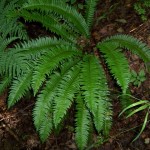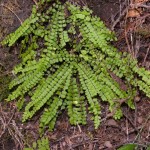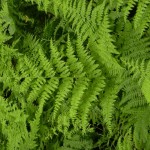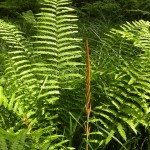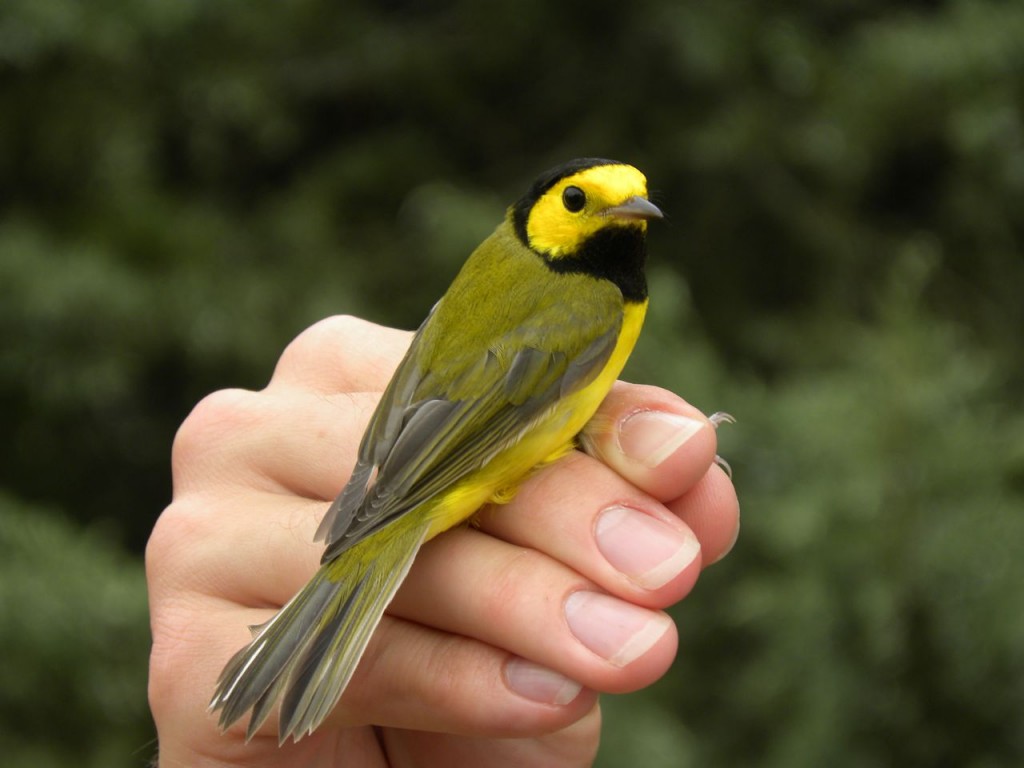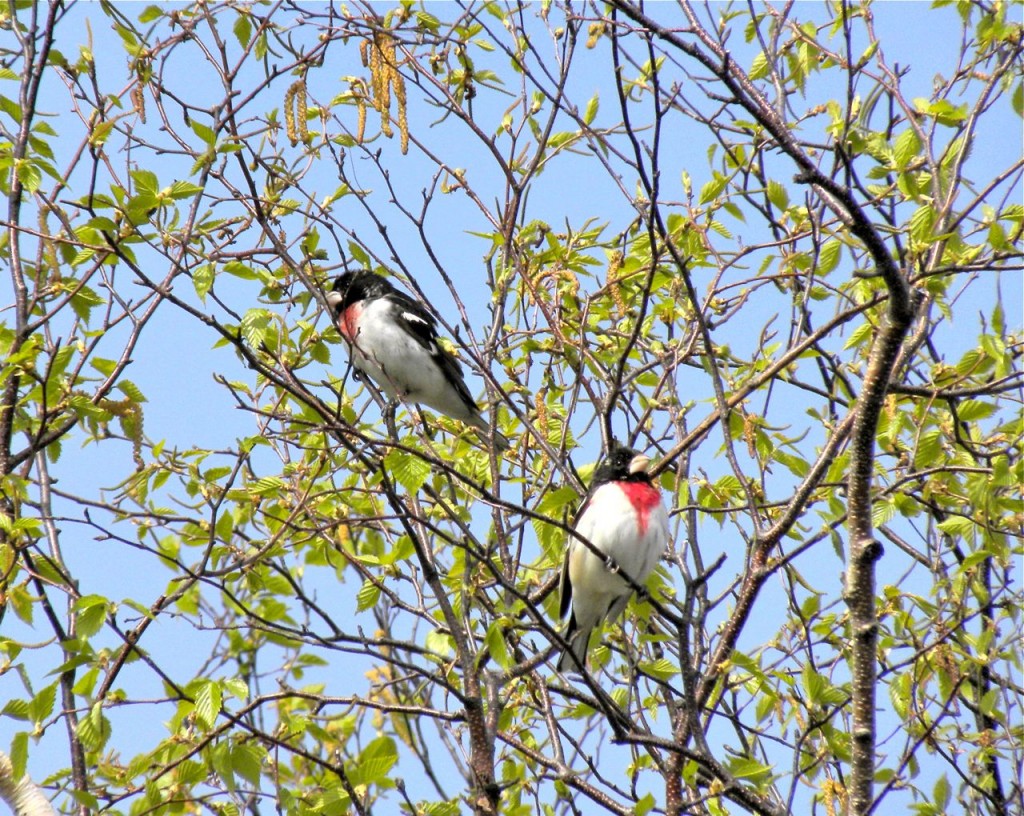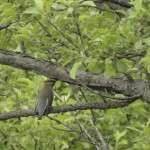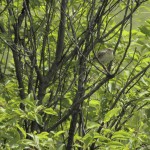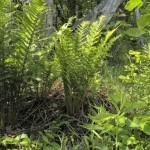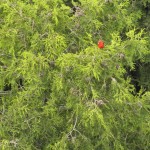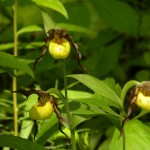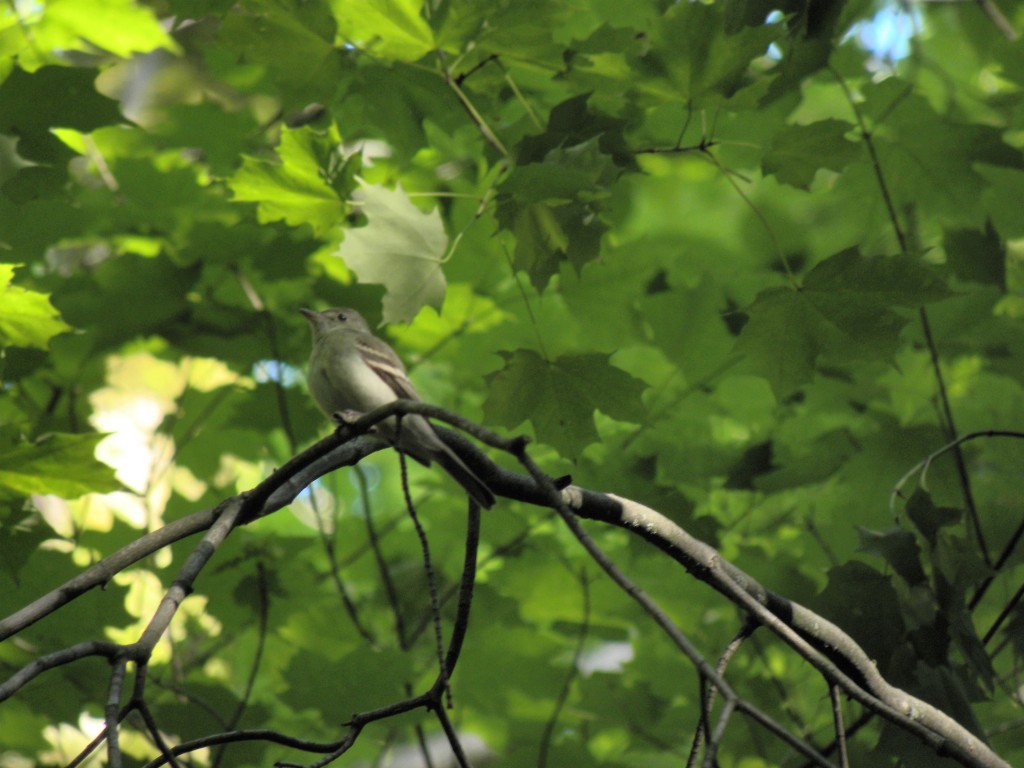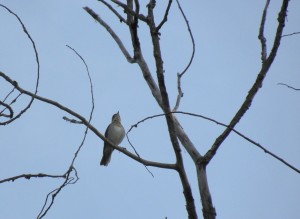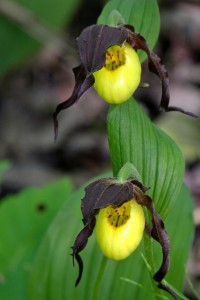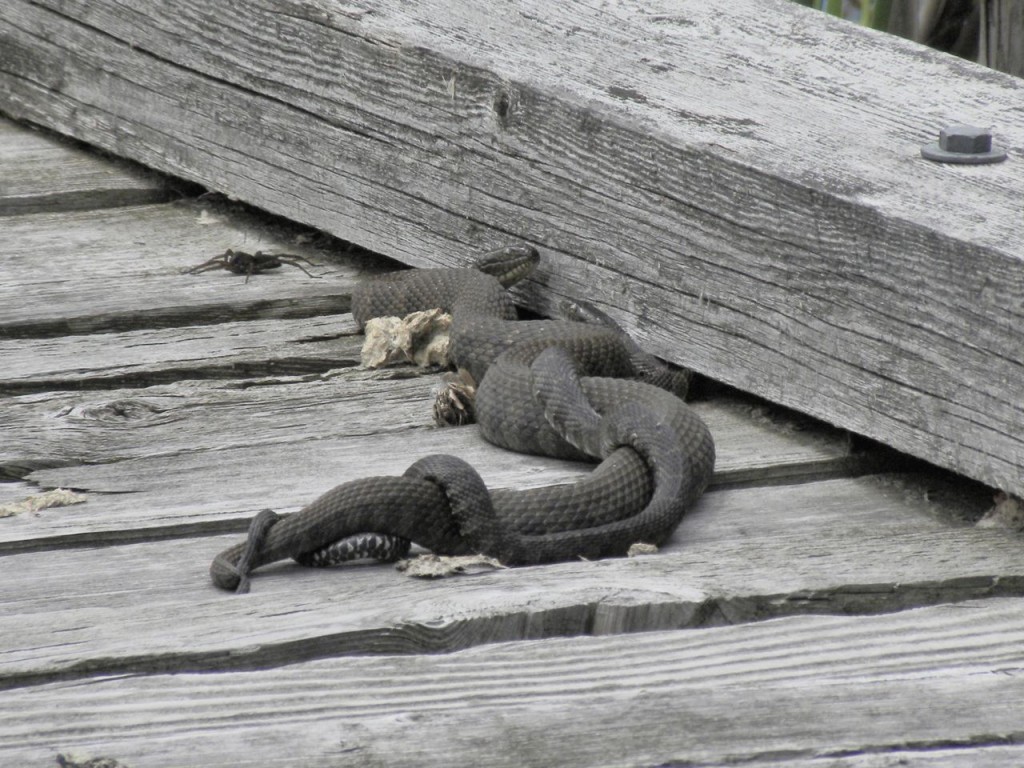23 June 2013. Norfolk Co. ON. Today was my day to lead a naturalists’ club hike studying birds and ferns; the latter being a newish interest of mine. There are about 75 species of fern in the province so I believe competency at identifying of 20-30 of the commoner ones is within reach. However this morning’s guided walk started in the humid aftermath of a night of thunderstorms, the temperature was soaring by 8.00 a.m. and the mosquito population was up early in anticipation of a fruitful day.
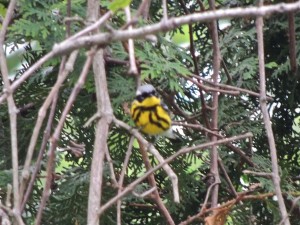
As we waited for the rest of the group to arrive, I explored the forest growth along the roadside. It was instantly rewarding, I could hear a Gray Catbird buried in the cedars, a not-far-away Veery, tree-top Red-Eyed Vireos and a busy-body Yellow Warbler, all singing lustily, apparently happy with a day that promised plenty of insect food for their young broods. I thought I could hear a Black and White Warbler a little further away and went looking for it, it eventually showed itself quite openly and as if to join in the action, a male Magnolia Warbler popped out to take a look at me. Now Magnolia Warblers are birds that we usually see on spring and fall migrations only, they’re a species that breeds much farther north, it was certainly unexpected at this time and place. Perhaps it was a very late migrant (it happens) or a bird that had lost its compass and ended up in the wrong part of Ontario. Either way it was Bird of the Day, not only for it’s unusualness, but also for it’s dramatic beauty. Few birds match an adult male Magnolia Warbler for dramatic splendour and I’m including a photograph to prove that point. I’ll add my apology for its blurriness, it’s not up to the standard I have set myself, my excuse is unfamiliarity with a new camera.
The day produced about 40 different species of birds including a surprising number of warblers; in addition to three already noted we found Ovenbird, Black-throated Green, Chestnut-sided, and Pine Warblers too.
And the ferns? Well they can be baffling but, as is often the case with the focused study of a new subject, the blurs are slowly giving way to distinctions, I can almost distinguish between young Cinnamon and Interrupted Ferns, and I know a Hay-scented Fern when I see it. And if all of this sounds obscure and a touch so-what-ish, well that’s the way it goes studying ferns.
